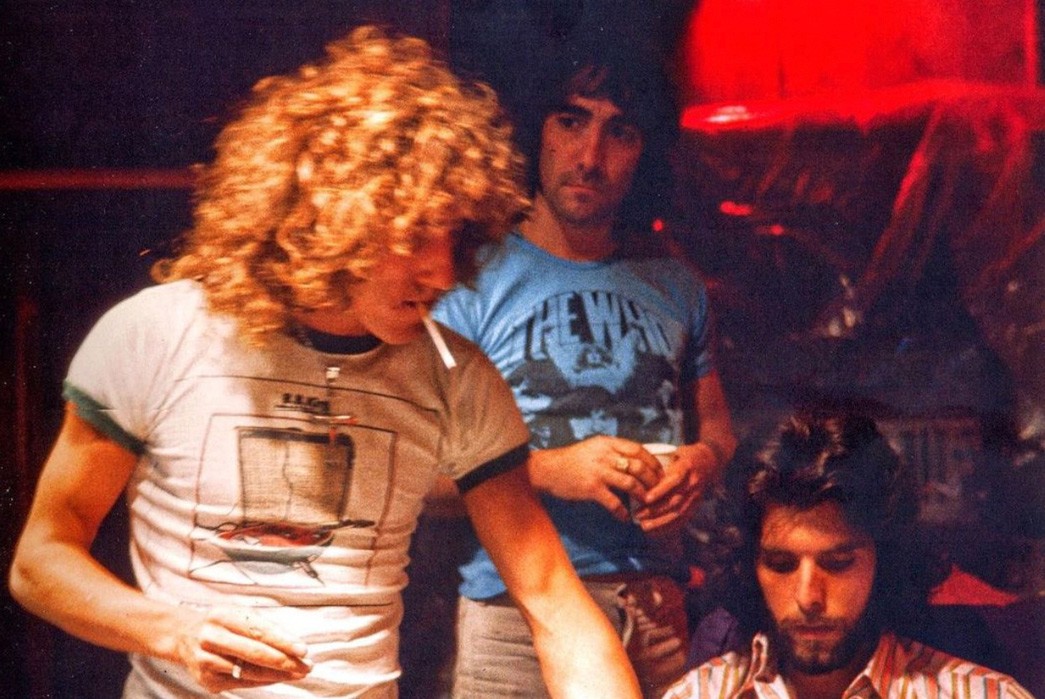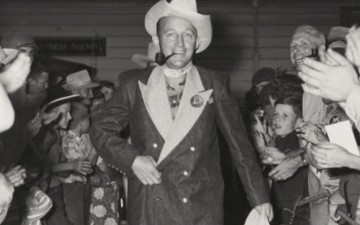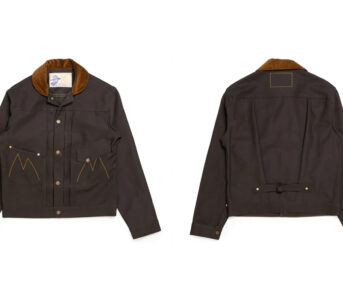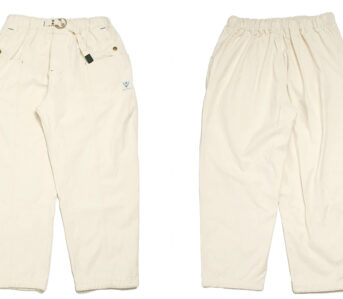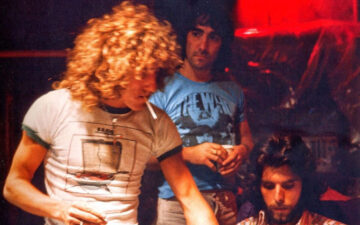Fashion, in all its many forms, can be distilled down to the physical manifestation of our personalities. You could say that what we wear speaks to who we are without using words. In which case, nothing gets the point across quite as effectively as a graphic tee. They may lack the nuance of complex wardrobe arrangements but they send a clear and succinct message. T-shirt decoration has become so ubiquitous in human culture that you can find a graphic to say absolutely anything you want to about how you feel, what you think, where you’ve been, who you support, brands you prefer, or simply your taste in design and graphics. There is not only a graphic tee for everyone, but many graphic tees for everyone.
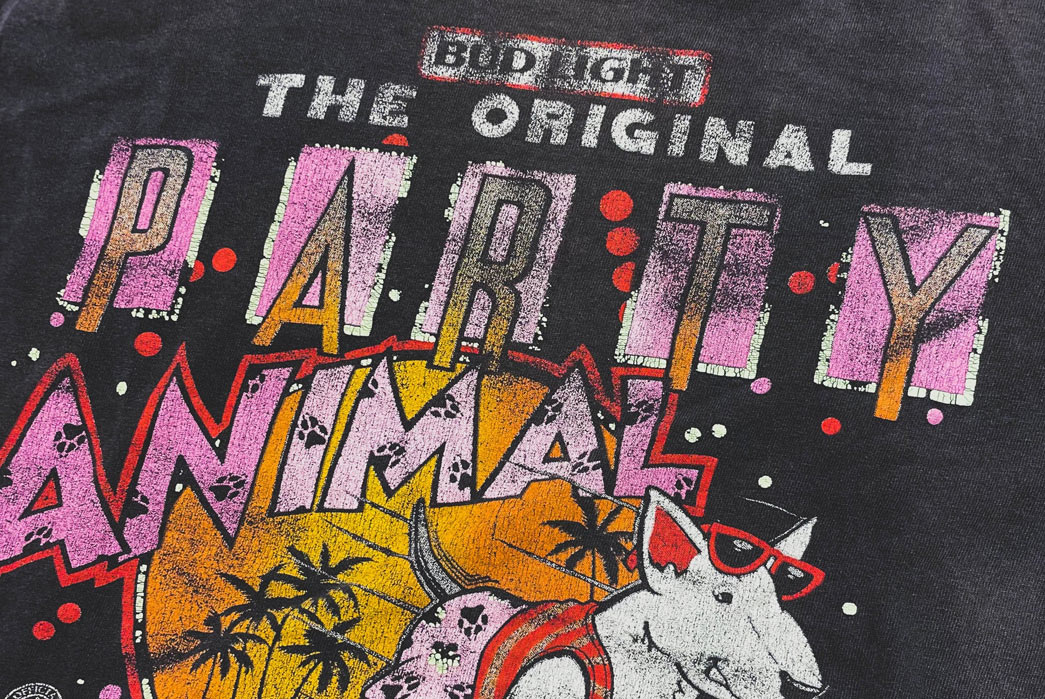
A 1980s Budweiser promo graphic tee. Image via eBay.
What makes this sartorial phenomenon so remarkable is that t-shirts, in the form in which know them, have only been around for a little over a century. Let alone, t-shirts decorated with some form of graphic, which only became a thing after WWII. In fact, a little-known military practice during WWII was responsible for introducing the concept of graphic tees to the world. Technology that allowed the printing of graphics onto tees at any kind of scale only came about in the early 1960s. Within a decade, graphic tees had become a quintessential part of fashion around the world. And that’s only the beginning of the story.
Army Issue
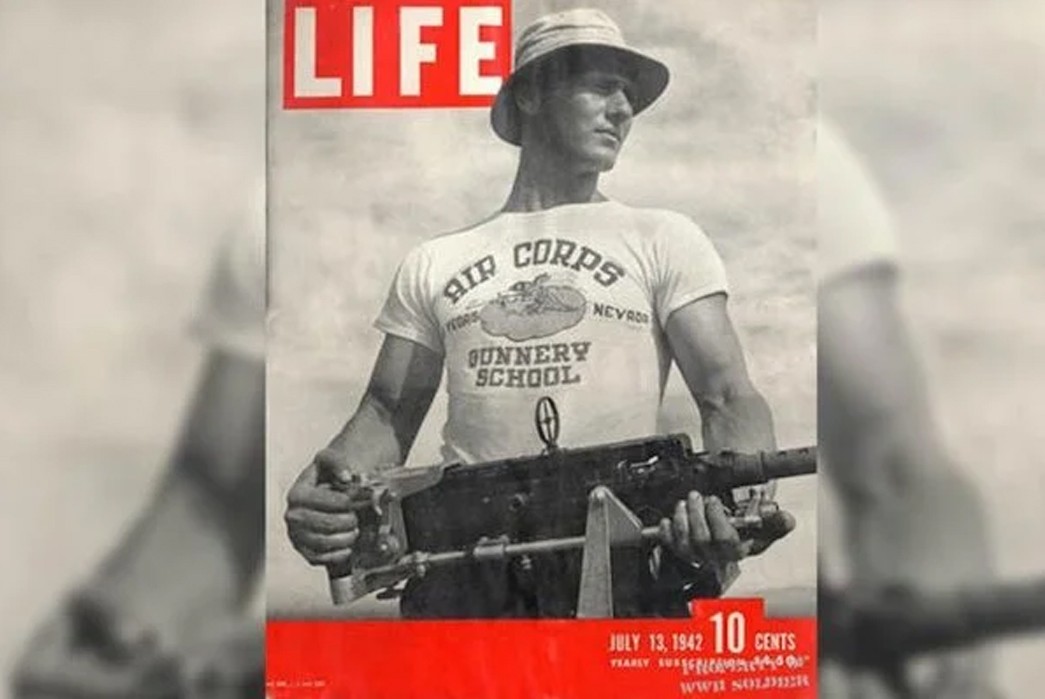
US Army trainee in a graphic tee during WWII. Image via Time Life.
Like so many other garments and practices in modern men’s fashion, we can look back to WWII for the birth of the graphic tee. The t-shirt had been around since the late 1800s as an evolution of men’s underwear. Historians generally agree that factory workers in England took union suits — what we call long underwear or long johns today —and cut the lower half off, resulting in something resembling a modern short sleeve henley. By 1900, clothing companies started selling the first items that look like modern t-shirts. Along with his many other literary and cultural accomplishments, F. Scott Fitzgerland is responsible for the first known printed use of the term t-shirt in his 1920 novel This Side of Paradise.
By the outset of WWII, plain white t-shirts were commonly worn by men as undergarments and athletic gear. As such, the United States military issued them to soldiers during training camps. It is worth noting that the t-shirts used at the time were tube-style, with no side seams — which is still a desirable form of t-shirt for durability and comfort. Just look at brands like Left Field NYC, Whitesville, Merz B. Schwanen.
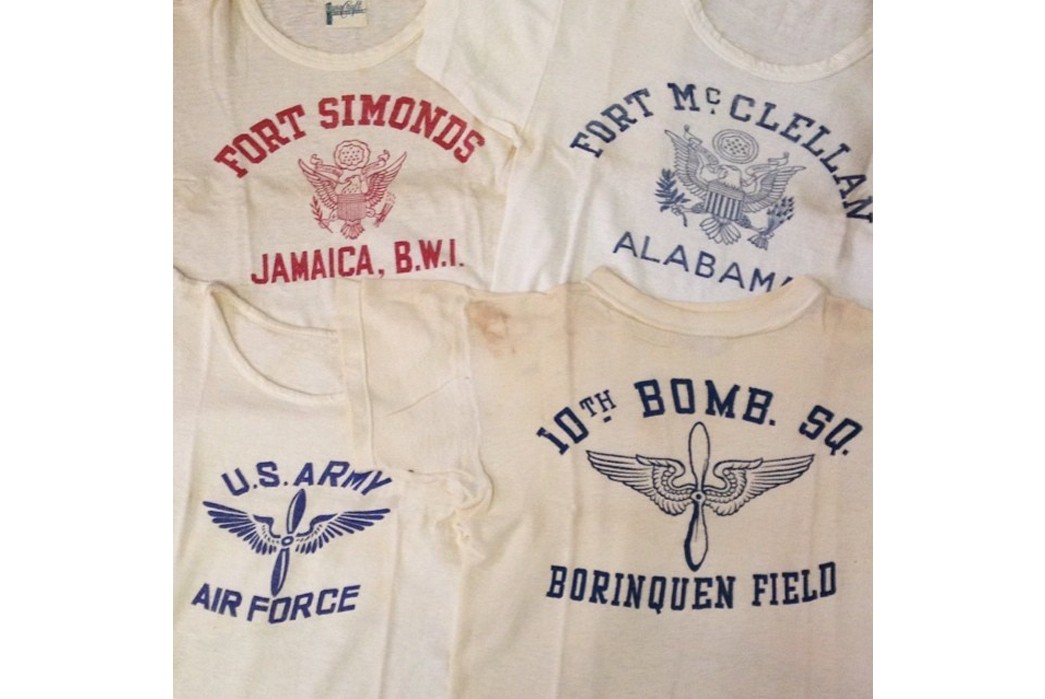
image via Sanforized
Being notoriously prideful, soldiers took to decorating their t-shirts with custom-designed logos and lettering to represent their units, bases, ships – the case of the navy, and deployments. These graphics were applied with paint and stencil, a practice that the military had used for decades to mark everything from footlockers to vehicles.
Adding graphics to t-shirts may have tricked slowly into civilian practice after the war as veterans returned home, but a Life Magazine cover from July 13, 1942, caused them to explode into popular consciousness. On the cover was a soldier training at the Army Air Corp Gunnery School in Nevada. His plain white undershirt was decorated with a small logo of a winged horn toad firing a machine gun. Above the picture, in big block leaders read “AIR CORP,” with “GUNNERY SCHOOL” below. The handsome and muscular young man, topping off his fit with a white bucket hat and a 30-cal machine gun, grabbed the attention of Life Magazines’ enormous readership at the time.
Like a nationwide “ah-ha” moment, the idea that a t-shirt could be decorated with some form of art or words and worn as an independent garment was now in the sartorial ether. However, these military graphic tees were hand-made in either small batches or individually. Many soldiers would update them as their service carried on, making the practice more akin to tattooing than conventional shirt printing. Technology had to catch up to make producing graphic tees practical.
Thomas Dewey and Mickey Mouse
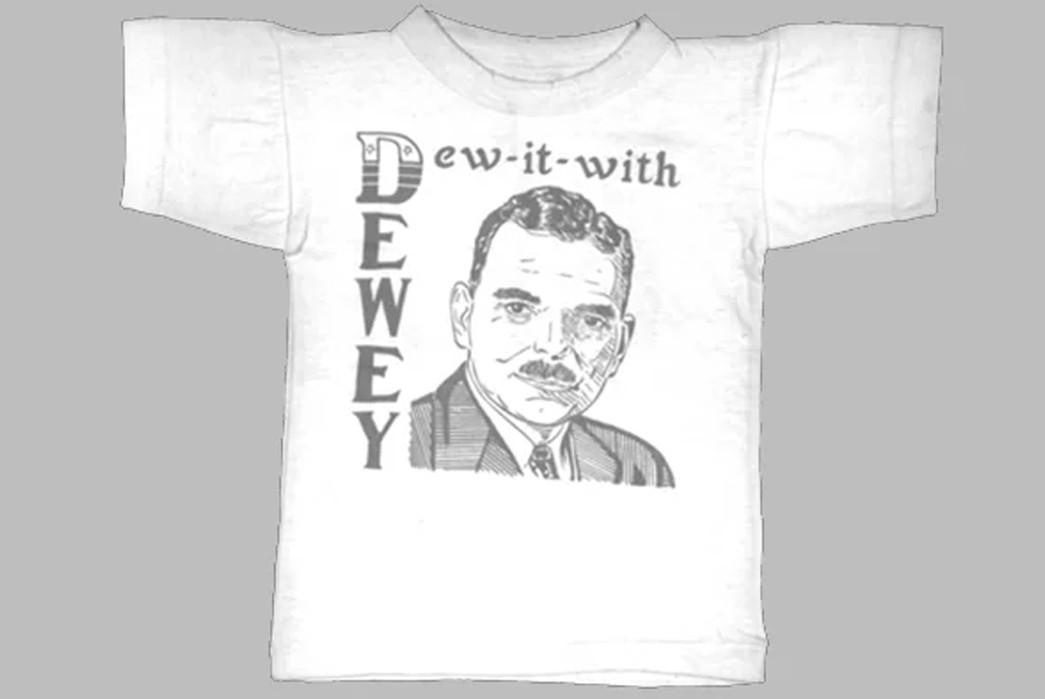
The first ever political graphic tee from the 1948 Presidential election. Image via
Perhaps taking a cue from war veterans, 1948 American Presidential candidate Thomas Dewy created t-shirts for his campaign. They depicted his face and the catchy-if-misspelled slogan “Dew-it-with-Dewey”. Unfortunately, the innovative marketing was not enough to defeat the incumbent Harry Truman. This means that Dewey has gone down in history more for his contribution to fashion than politics. Eisenhower and Kennedy used the technique successfully with “I Like Ike” and “Leadership for the 60s” t-shirts, respectively.
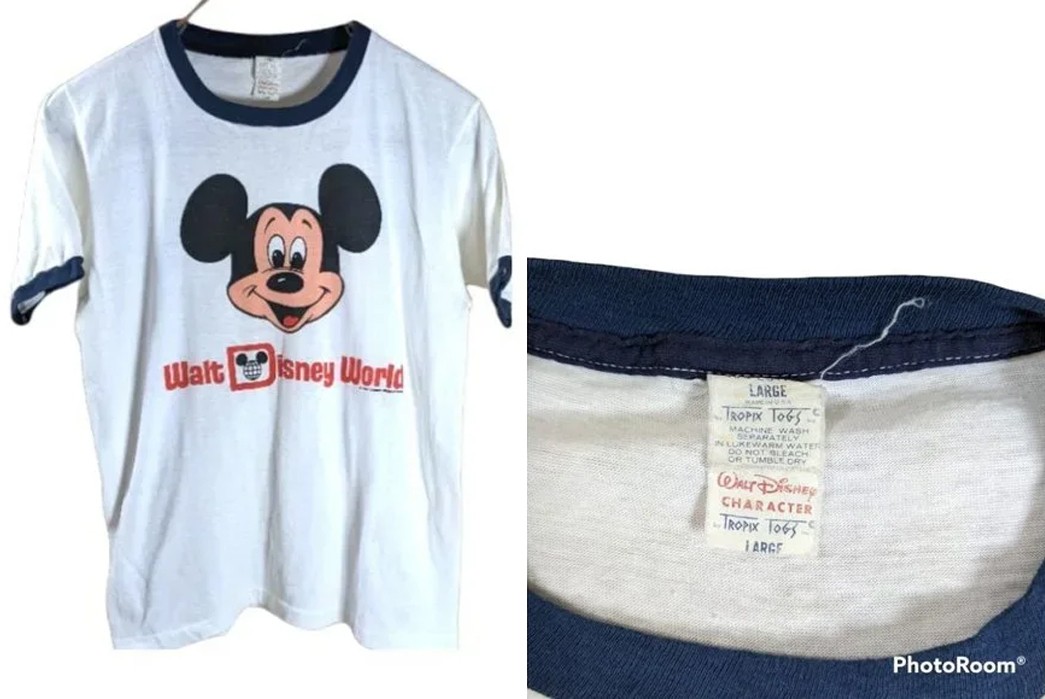
A circa 1950s Tropix Togs Mickey Mouse Disney World Tee via Poshmark
A far more famous figure ended up on a t-shirt less than a decade later as part of one of, if not the first-ever commercial licensing agreements to make printed clothing. In the late 1950s, a Miami-based company called Tropix Togs made a deal to produce merchandise featuring Mickey Mouse. Disneyland opened in 1955 and Walt Disney was looking for ways to promote the park, and did so with printed ringer t-shirts with contrasting sleeve cuffs and necklines, made by Tropix Togs. What is probably the most lucrative merchandising endeavor in history, began with a cartoon mouse printed on a t-shirt.
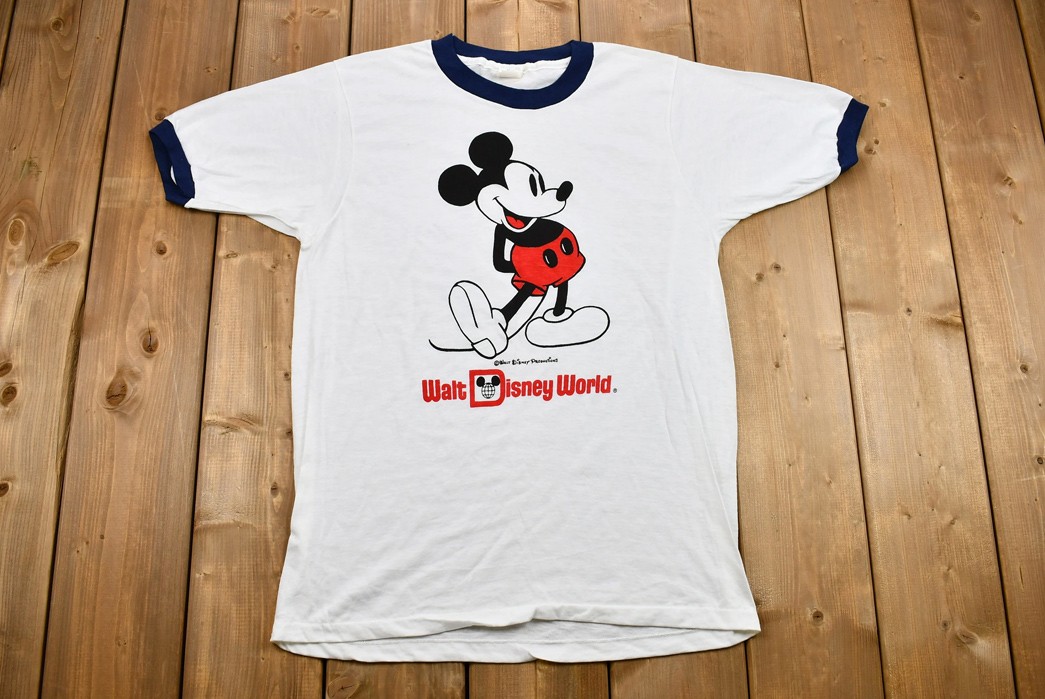
A circa 1970s Tropix Togs Walt Disney World Mickey Tee via Etsy.
Andy Warhol, Hippies, and The Beatles
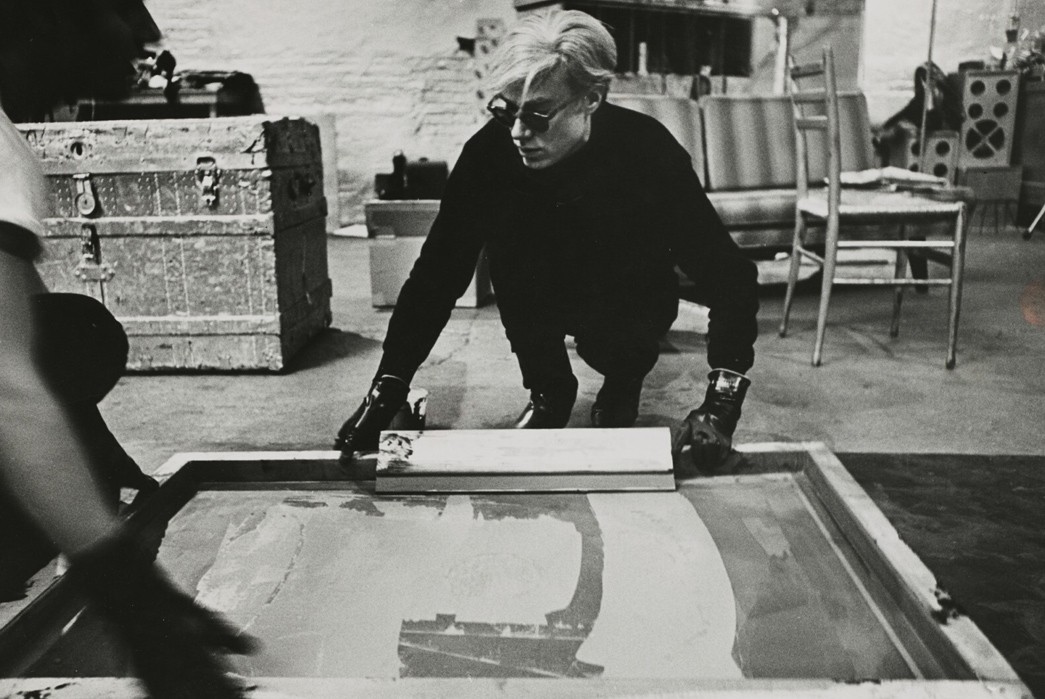
Andy Warhol screen printing. Image via Sothebys.
Graphic tees as we know them today became possible with the combination of screen printing and Plastisol Ink in 1959. Plastisol Ink was the first substance that could be used in the screen printing process to mass-produce any kind of design onto cotton t-shirts. Artists were afforded the ability to put anything they wanted into wearable and sellable art. Underground and counterculture groups were amongst the first to adopt the new art form. As such, most early creations were irreverent, marking the first time graphic tees were used to express displeasure rather than pride.
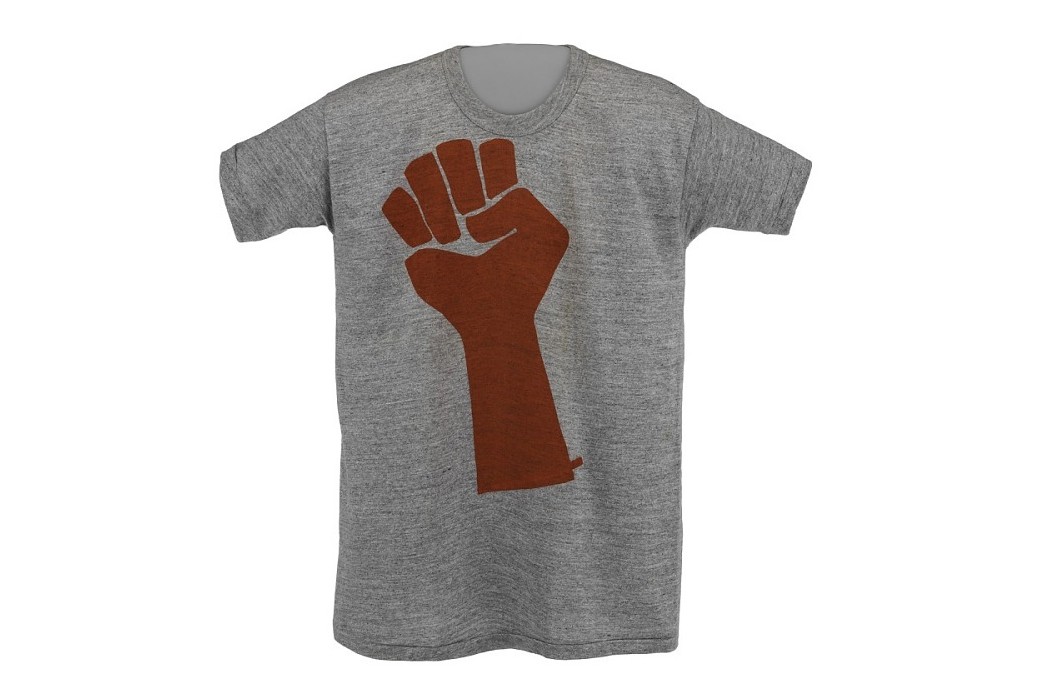
A shirt made by Harvard students during a 1969 sit-in. Image via The Smithsonian.
Screen printing took a step further in 1962 when the seminal artist Andy Warhol developed and popularized a method to transfer photographs into screen prints. He mostly used this to create art prints but the process was easily transferred to t-shirt production. Warhols stamp of approval also introduced screen printing garments into popular fashion and the world of music he was so intrinsically linked to. By the mid-1960s, graphic tees were becoming a common part of traditional style.
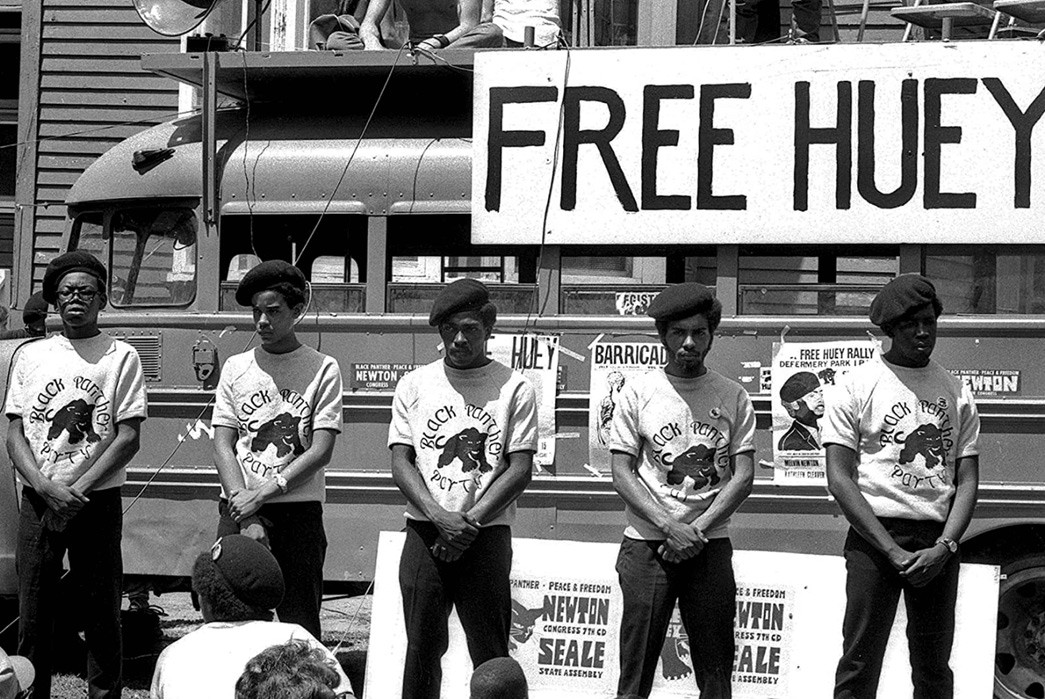
The Black Panthers in custom graphic tees. Image via WNYC.
That isn’t to say that the graphic tee’s role as a platform for counterculture speech dissipated. In fact, it grew substantially when the ease of screen printing combined with the volatile socio-political climate of the 1960s. The Civil Rights Movement, the Anti-Vietnam movement, and all the various causes of the day were splattered across countless t-shirts, starting a tradition of graphic tee activism that remains strong to this day.
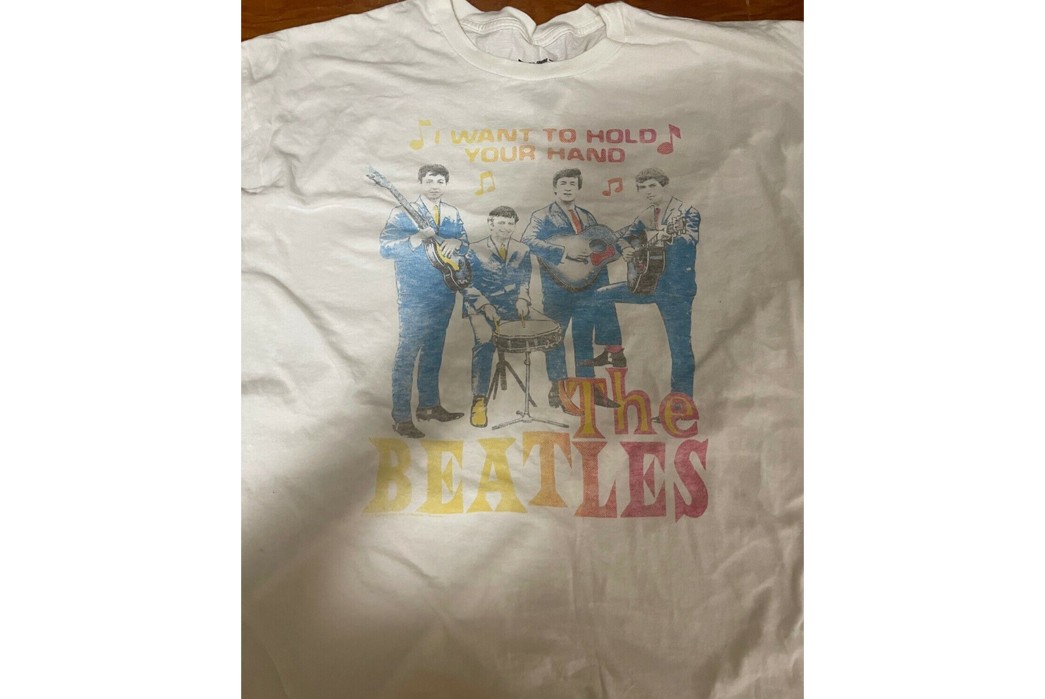
Original Beatles graphic tee. Image via eBay.
If there is one musical group that deserves credit for launching the graphic tee into mass popularity, it is The Beatles. Just as with the Mouse a decade earlier, the Lads from Liverpool created a merchandising empire. It has been said that the band’s manager Brian Epstein approved absolutely every licensing request that came to him because it all promoted the band. While he notoriously lost the band millions in revenue by inking unfavorable deals (they still made it out alright) he was correct in foreseeing the power of merch. If historical documentation is true, the Beatles can be credited with pretty much inventing the band tee.
Musicians and Movements
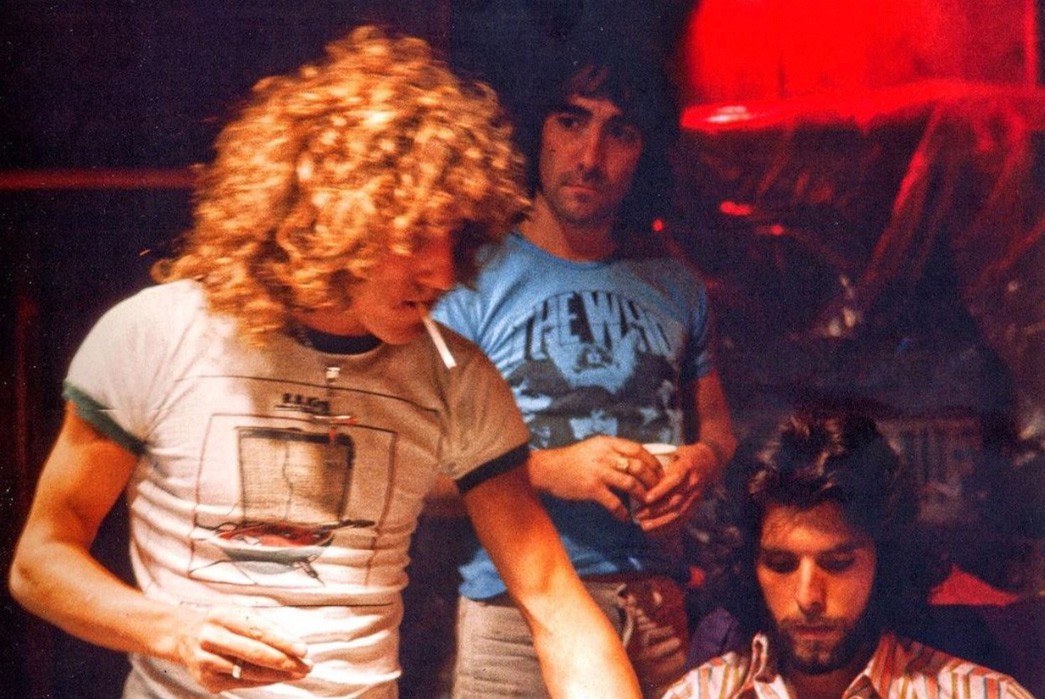
Roger Daltrey and Keith Moon of The Who, 1979. Image via Nostalgia Rock.
The next big leap in graphic tee technology came in 1969 when Micahel Vasilatone invented the Dual Rotating Printing Press. This allowed artists to mass-produce shirts faster and cheaper, ushering in the golden age of the band tee. After seeing the Beatles and Rolling Stones cash in on merchandising during the 1960s, bands realized that a great logo that could be stamped on shirts was almost as important as their music. Merch was sold at record stores and on tour, with bigger groups making deals with retailers.
This early era of band merch still stands as the gold standard, with bands following the same formats and reproductions being sold everywhere from Target to Saks Fifth Ave. So many great pictures exist from the 1970s of bands wearing their own merch, which doesn’t happen much anymore. Another intriguing practice from the time was fans making their own tribute merchandise at home to wear to concerts. Fans can be seen in the Led Zeppelin concert film The Song Remains the Same wearing their own bootleg band tees — A tidbit that was replicated in the 2000 film Almost Famous.
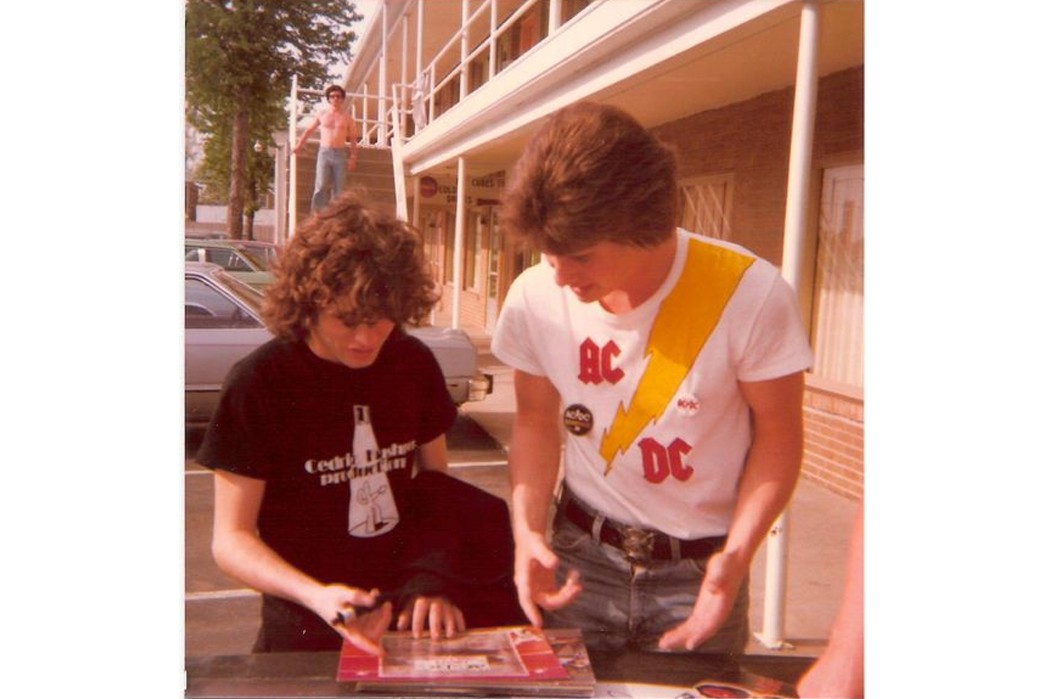
Angus Young with an AC/DC fan in 1979. Image via Nostalgia Rock.
Band tees have been prominent in fashion at meandering levels for decades, now, and a quick look on Grailed will show you how popular they are now — especially vintage articles. With the exception of a few bands heard on classic rock stations and a few contemporary artists like Wu-Tang Clan and Notorious BIG, brands didn’t work with artists until the 2010s. Now, musicians like Travis Scott and Drake collaborate with brands on merch while artists like Harry Styles and Taylor Swift design entire fashion lines for each tour that sell out at every show.
The rise of graphic tees to promote musicians has grown parallel to the promotion of social justice movements. T-shirts printed with the face of their imprisoned leader were worn by The Black Panther movement in the 1970s. “The Future is Female” became the definitive slogan of the women’s rights movement by showing up on t-shirts. Almost every political and social cause since the 1970s has been prognosticated through graphic tees.
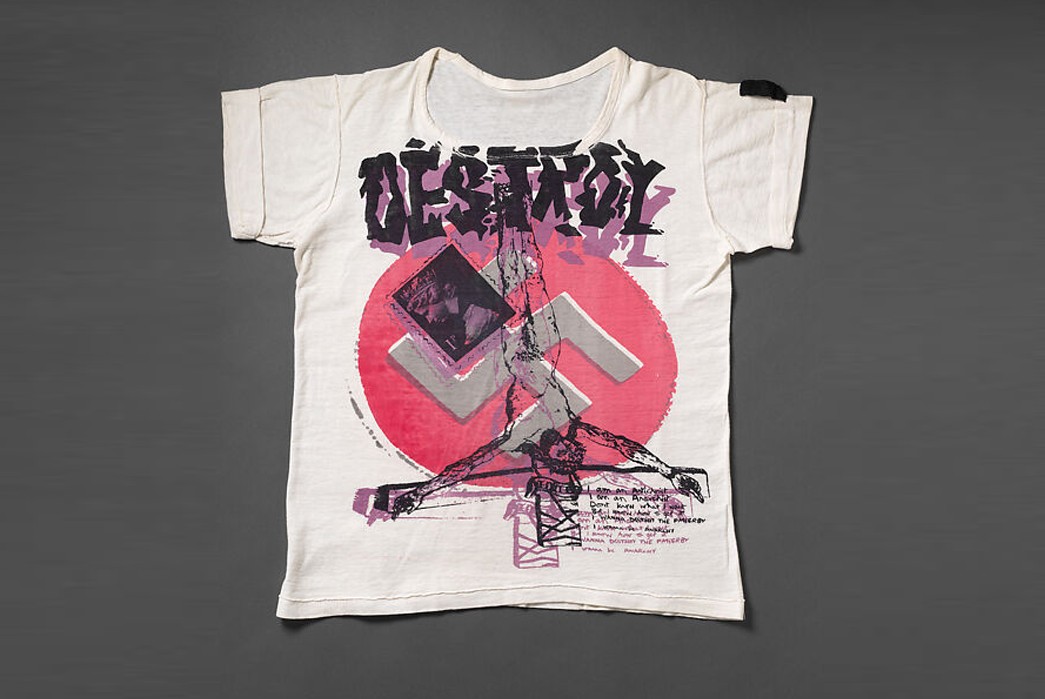
An early Vivienne Westwood graphic tee. Image via The Met.
Graphic tees were a huge part of the punk social movement, first in Britain during the mid-1970s before moving to America in about 1977. Renowned fashion designer Vivienne Westwood got her start by making graphic tees with iconography we now attribute to the term ‘punk’.
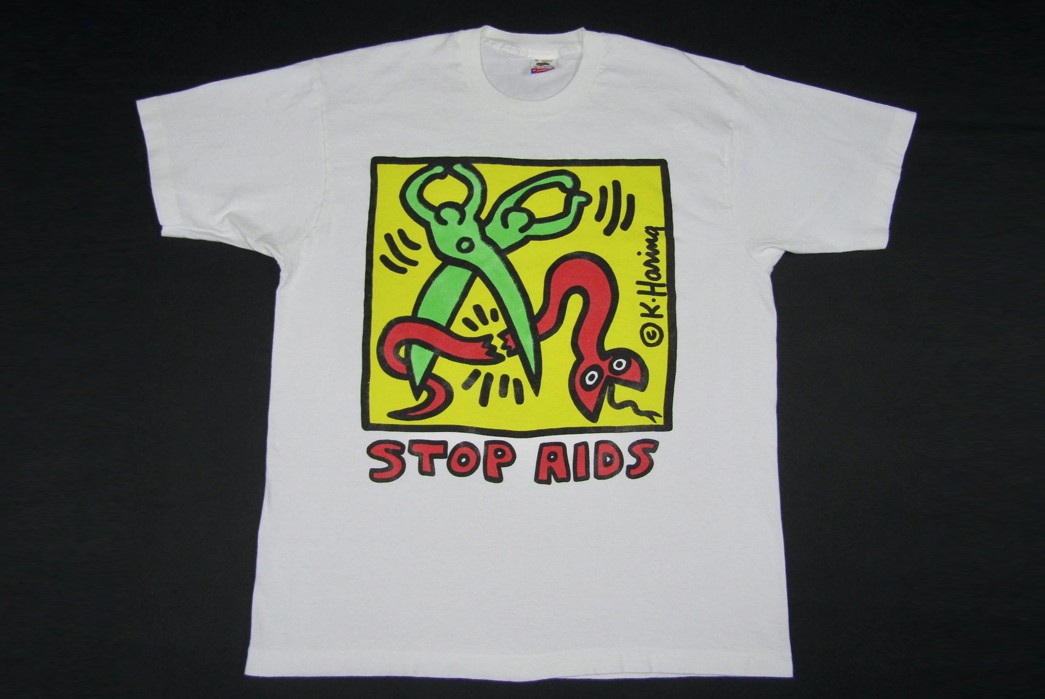
A Keith Haring designed STOP AIDS t-shirt. Image via Etsy.
A decade later, one of the most famous artists of the 1980s, Keith Haring, produced graphics for AIDS awareness. His work on easily mass-produced t-shirts raised a substantial amount of money for the cause. As Marc Richardson describes it in his 2020 Dry Clean Only article, “charitable organizations and political movements both large and small had clued into the fact that T-shirts were inexpensive to produce and could still be sold at reasonable prices, while still netting a profit.”
Corporation and Brands Cash In
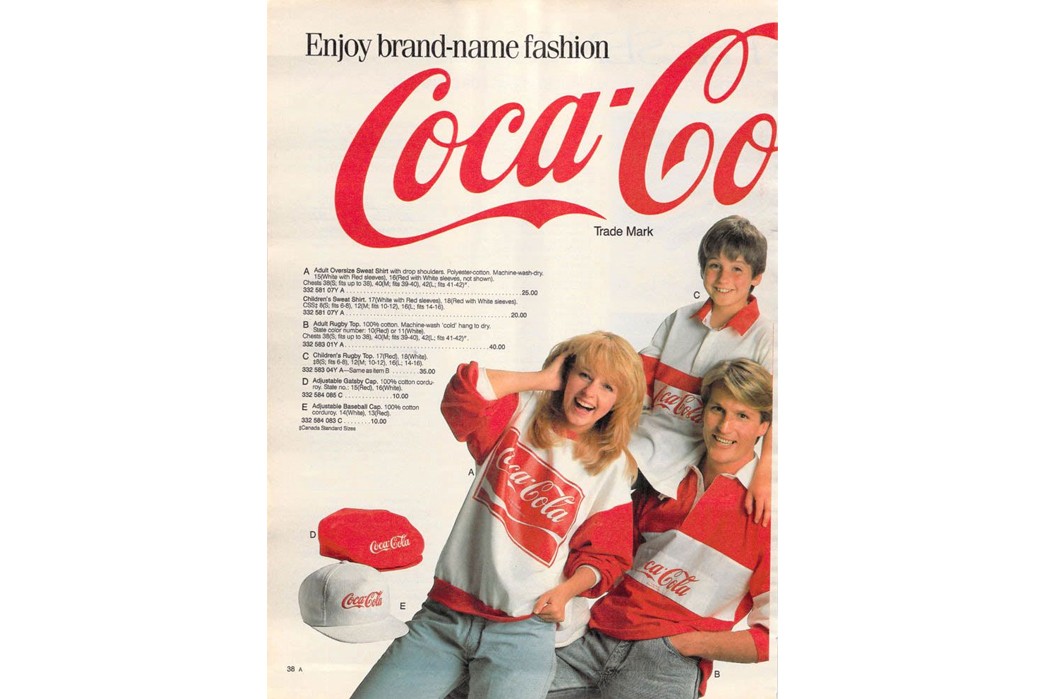
1980s Coca-Cola merchandise advertisement. Image via Pinterst.
Graphic tees are cheap to produce and allow for a pretty big margin, which is why corporations began to cash in during the 1980s. Brands that previously had little-to-nothing to do with merchandising, like Coca-Cola and Budweiser, began offering t-shirts as promotional devices, selling them in-store and by mail order, an giving them away with purchases. It may be common to see any corporate logo on a t-shirt today but this practice was novel in the 1980s, which made it cool for a period.
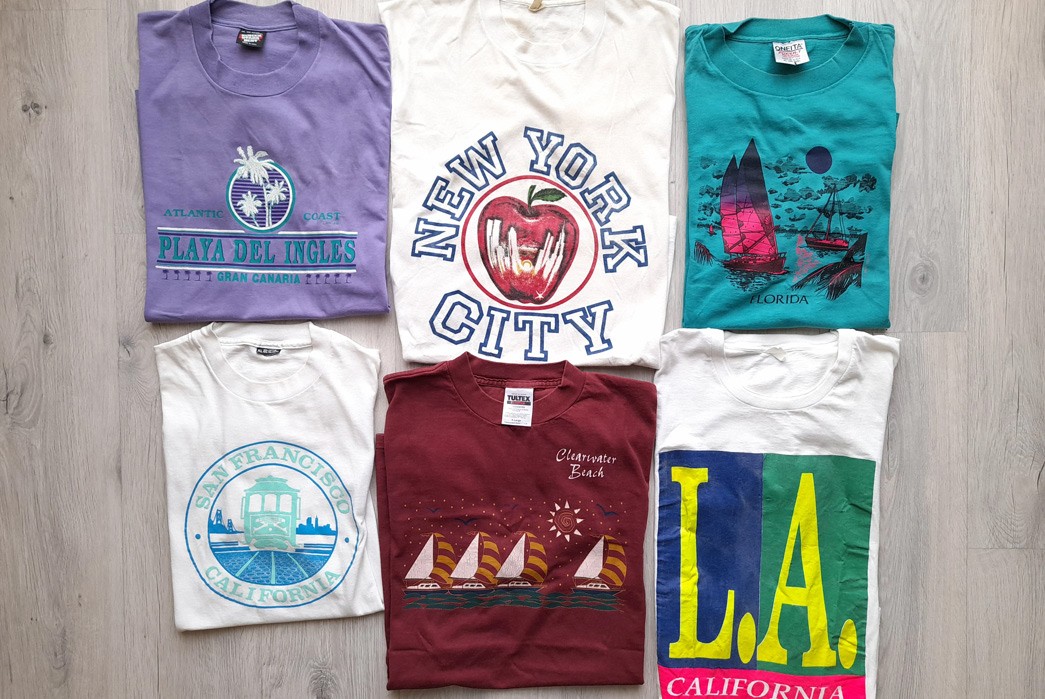
Tourist tees. Image via Etsy.
At the same time, companies began to pop up devoted to producing graphic tees for smaller clients. Your mom-and-pop grocery store and independent garage could now sell their own t-shirts. This led to the rise of tourist t-shirts, one of the most popular genres of graphic tee. By the mid-1980s, practically anywhere in the world that you traveled to, you could get a t-shirt to show off back home. Your favorite bar, greasy spoon, arcade, or ice cream shop all had merch for sale behind the register. A large chunk of the thrifted t-shirt industry today thrives on these kitschy old relics.
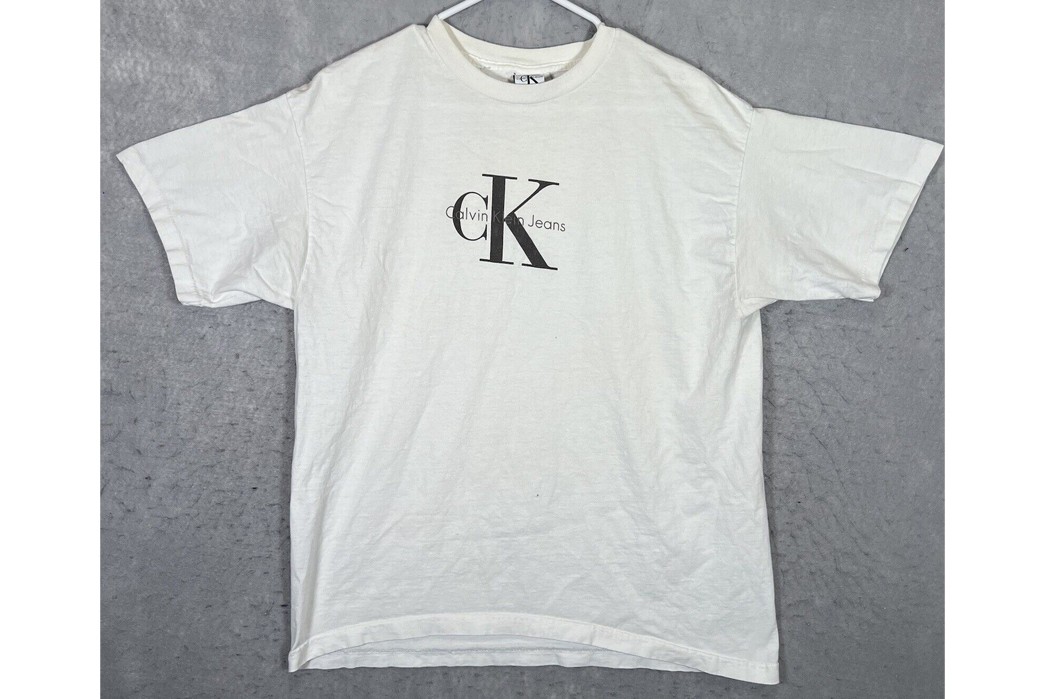
1990s Calvin Klein graphic tee. Image via eBay.
Perhaps surprisingly, the last group to adopt graphic tees were the high fashion brands. The medium was seen as below them until the late 80s and early 1990s, when the markup opportunity became too much to resist. Suddenly, brands like Armani, Calvin Klein, and Versace were selling plain old t-shirts with their logo slapped on them for an outrageously expensive price. The trend took off thanks to clever marketing and the exclusivity appeal. Wearing these garishly priced items showed off the fact that you could afford to spend that much money – even if you really couldn’t.
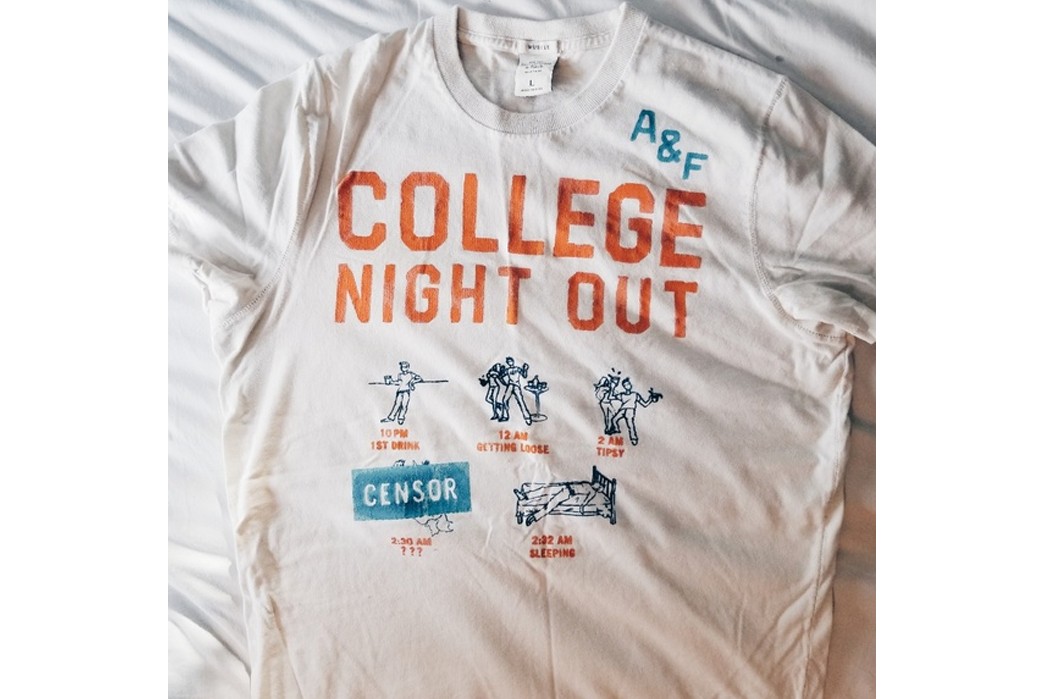
An early 2000’s Abercrombie graphic tee. Image via eBay.
By the end of the 1990s, the prestige of fashion t-shirts had trickled down to mall retailers like Abercrombie & Fitch, American Eagle, and The Gap. These brands made a killing for well over a decade selling countless iterations of their logo printed onto t-shirts of every color in the light spectrum. The other big trend of the 2000s was to replicate tourist t-shirts using brand names and made-up locations or businesses. Abercrombie notoriously took the practice too far with tasteless graphics with racist and sexist jokes, a major contributor to the company’s downfall.
Skate Culture, Pop Culture, and Irony
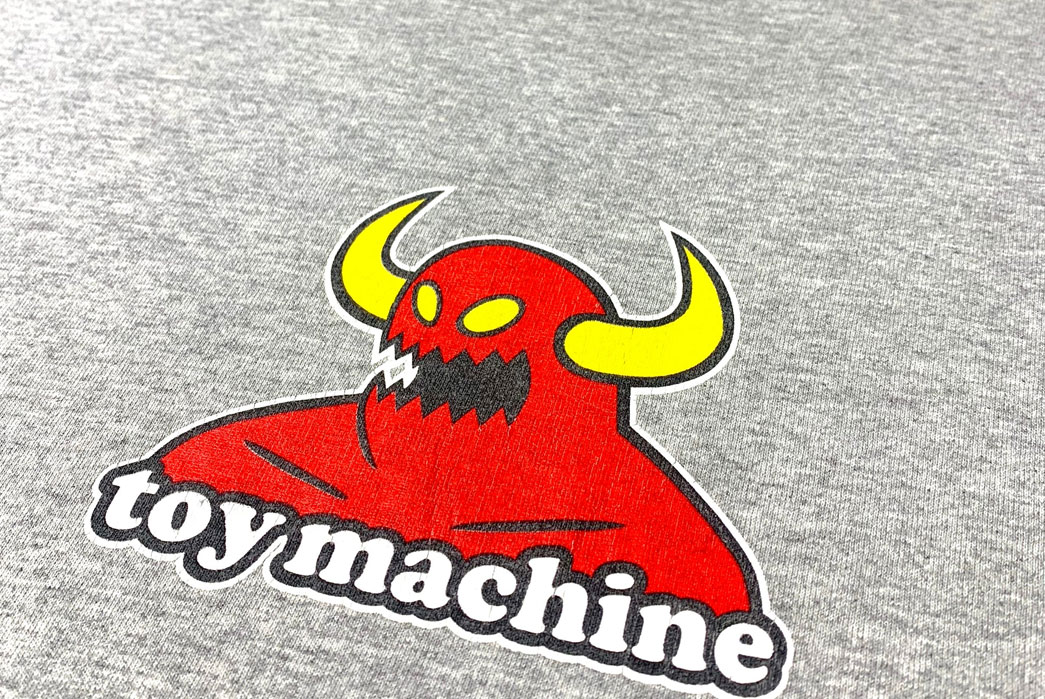
Skate brand Toy Machine’s signature logo was a 1990s skate culture classic. Image via Shopify.
Graphic tees as an artform reached its zenith when inkjet printing became available. In 1996, a printing device called “The Revolution” was invented that could print graphics directly from a computer onto a t-shirt. This allowed anyone with rudimentary graphic design skills and an idea to produce as many tees as they wanted if they had the money. Surf and skate brands were the first to really dive into this new opportunity.
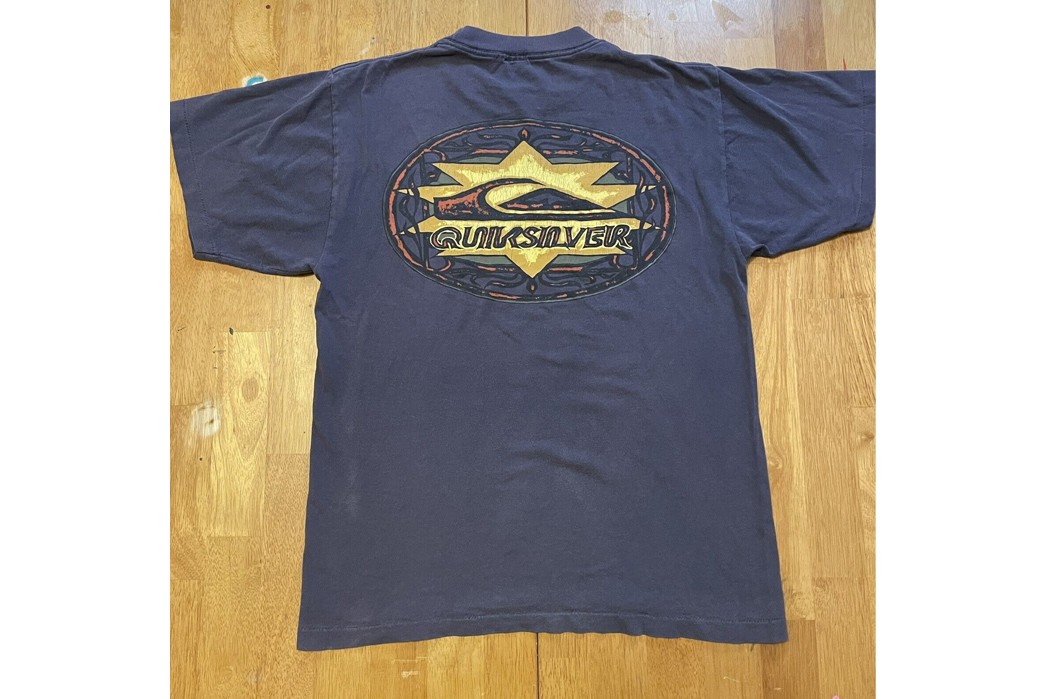
A vintage Quiksilver tee from the 1990s. Image via eBay.
Action sports brands were young, small, crafty, and hungry in the late 1990s, which allowed them the freedom to experiment with boldly artistic graphic tees. Companies like Toy Machine, Spitfire, and Quiksilver may have ostensibly been making skate decks, wheel bearings, and surfboards respectively, but what made them all famous and financially successful was their merch – especially their graphic tees. In the final age before social media, wearing artwork from these brands explained to others that you at least appreciated surfing and skating, if not practiced them.
As computing power improved in the 2000s, so did the ability to design and print graphics better and quicker. Around 2006, as social media was just emerging, a few companies showed up that only made graphic tees. They sold online, directly to the consumer, at low prices, and with massive variety. Designs were done in-house and for the most part, didn’t involve any licensing. Most of the ideas were humorous, densely ironic, and steeped in pop-culture references.
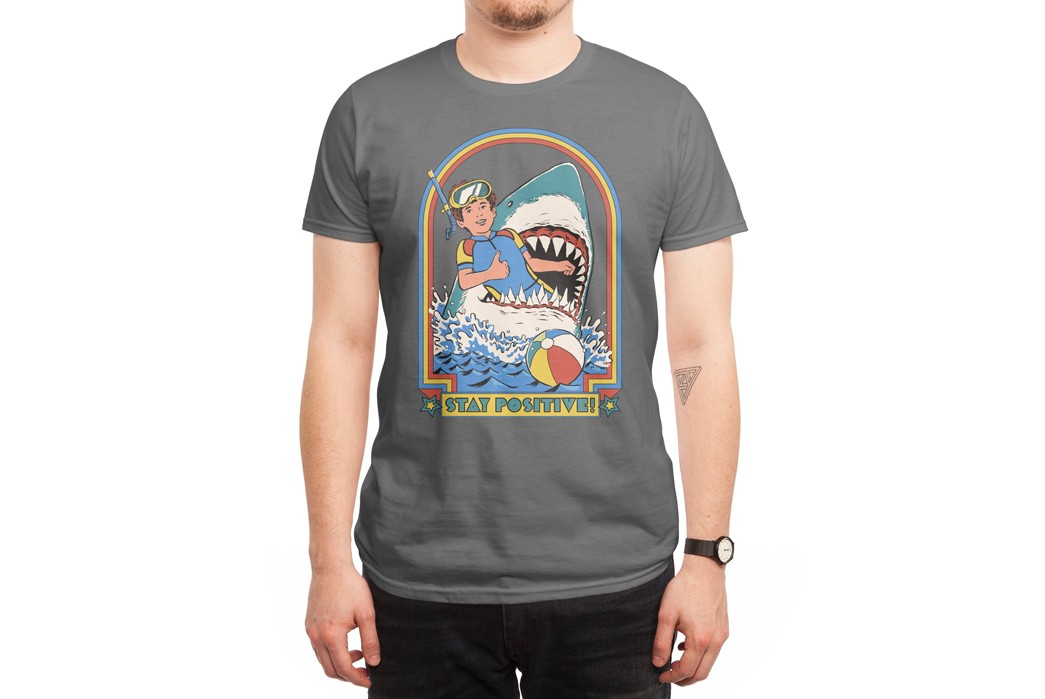
A standard graphic tee company t-shirt from Threadless. Image via Threadless.
Graphic tee-only companies saw a bubble around 2010 followed by a routine pop around 2016. The handful of companies that survived mastered a system of massive graphic inventory, print-to-sell customizability, and working with outside artists. In that way, the graphic tee industry is thriving.
Too Many Tees

A highly-disturbing sea of discarded clothing in the Atacama Desert. Image via Aljazeera.
It would be irresponsible not to mention the toll that graphic tees have taken on the environment and people in the developing world. More than many other types of clothing, graphic tees have been overproduced for the past half-century. A sprawling list of examples exists but none better than sporting event championships. For decades now, every major professional and collegiate sporting championship has had merchandise printed for both teams in advance. While the winning team’s merchandise gets sold, the losing team’s gets shipped off to a country that doesn’t have the infrastructure to even support professional sports.
Fast Fashion has been the culprit for a long time now but ‘disposable’ graphic tees are a problem throughout every corner of the garment production industry. So as creatively liberating, game-changing, society-shifting, and endearing graphic tees have become, the world could use way less of them.
Graphic Tees Today
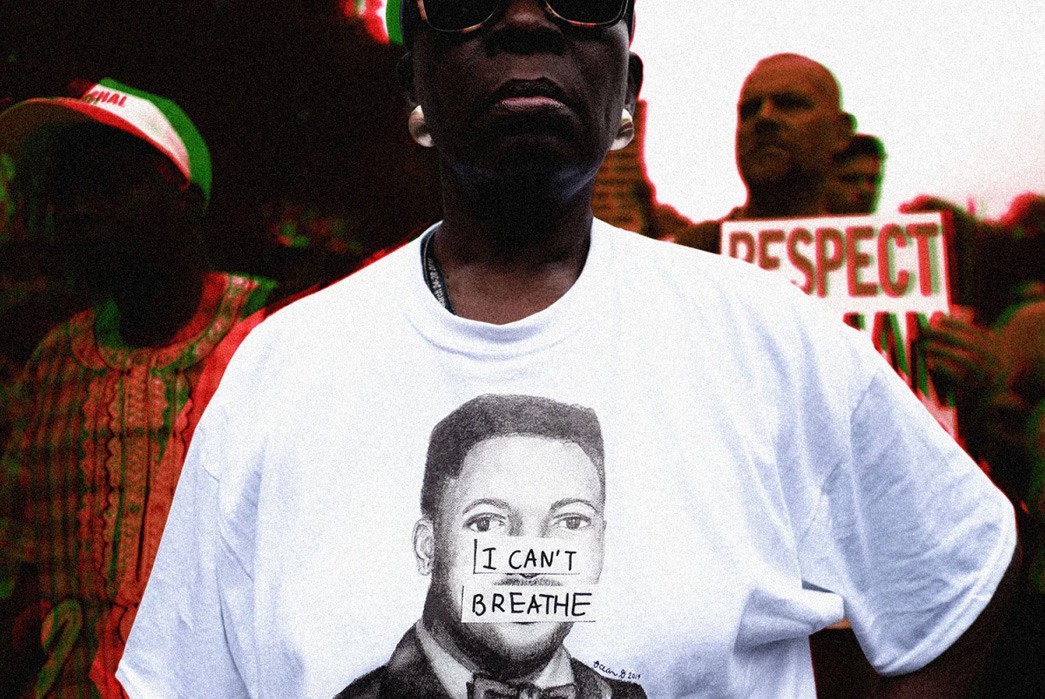
A modern protest shirt. Image via InsideHook.
All things considered, graphic tees have settled into a good place over the past few years. Fashion brands aren’t excessively slapping their logo all over everything. Sure, there are brands like Supreme and Balenciaga that trade on their name alone but they at least print it tastefully. Blank t-shirts sell far more than graphic tees at most fashion brands, which means that most graphic tees are being made by smaller brands and by hungrier artists. Which is unquestionably a good thing.
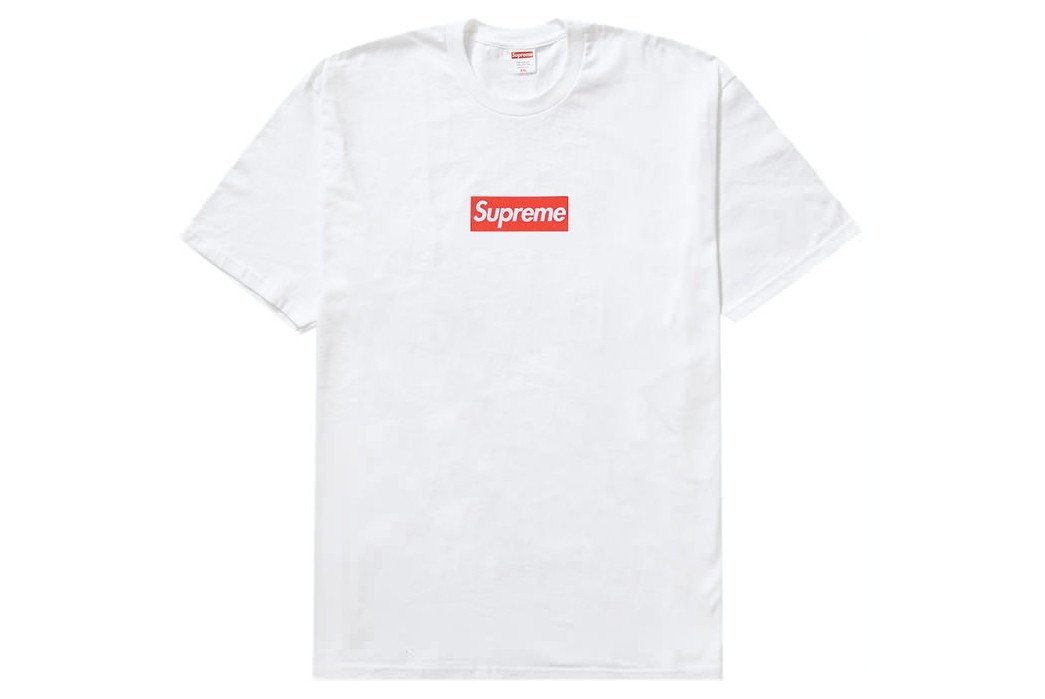
The iconic Supreme Box Logo tee. Image via O4.

